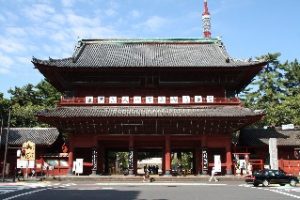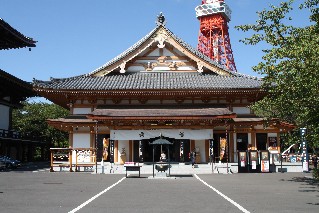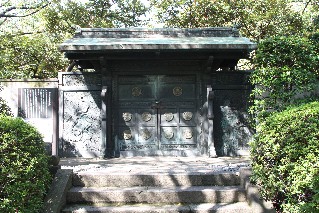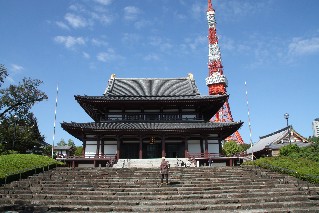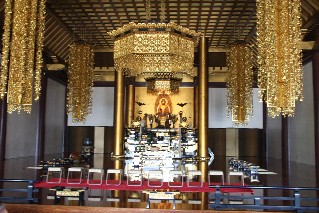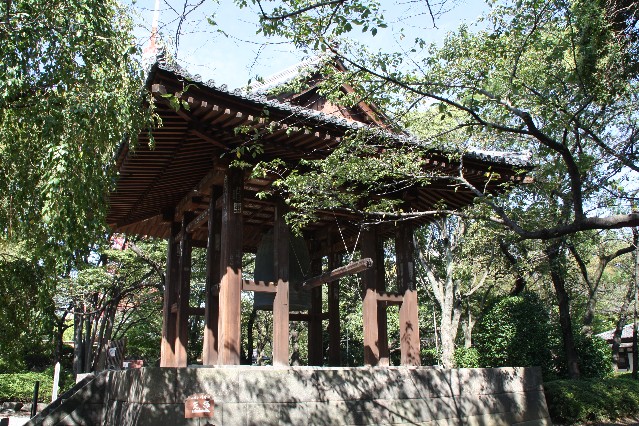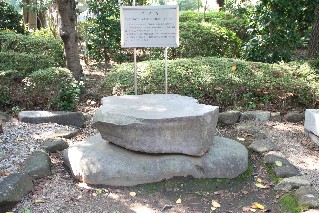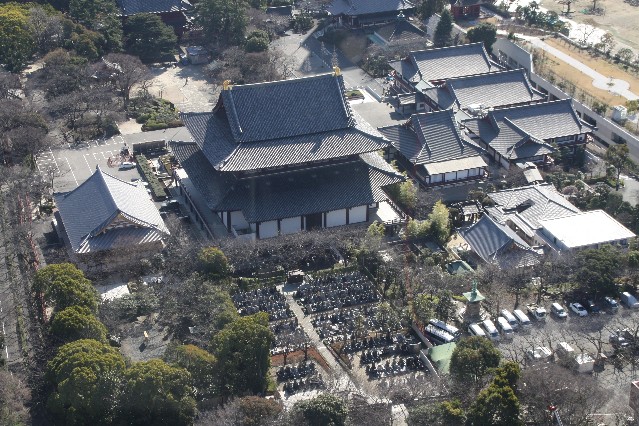Zojoji Buddhist Temple Tokyo
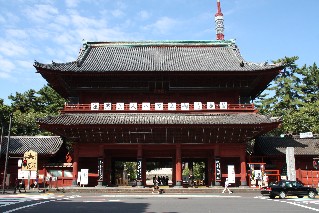
Zojo-ji Temple (増上寺) is a large Buddhist Temple located close to Roppongi Tokyo, just next to Tokyo Tower. The temple was founded in 1393 by the Jodo Shu buddhist denomination as the central monastery in Kando (East Japan) region. The Buddhist practice of ‘nembutsu’ was strictly followed (the recitation of Amida Buddha’s name) The temple was moved to it’s current place in 1598.
Zojo-ji Temple became the family temple of Tokugawa family and also served as the administrative centre to oversee the religious studies and activities of Jodu Shu. Around this time the grounds of Zoji-ji covered 826,000 square meters and contained 48 smaller temples and around 150 grammar schools. There were as many as 3000 priests and novices residing here at that time. The Tokugawa shogunate came to an end when the Meiji Era started in 1868, and an anti-Buddhist movement swept through Japan. During World War II most of this site was destroyed by bombing including the main hall, attached temples and the mausoleum of the Tokugawa family.
Ankokuden Temple is located just to to the right of the main Hall of Zojo-ji Temple. Enshrined in this temple is the Black image of Amida Buddha, which was deeply worshiped by Ieyasu Tokugawa, the 1st Tokugawa Shogun. During the Edo Period it was widely believed to be the image which brings victory and wards off evil spirits. The Black image of the Buddha is shown to the public 3 times a year – 15th January, 15th May and 15th September.
The Mausoleum of Tokugawa Shoguns is located at the rear of the temple containing six of the tombs of the Tokugawa Shoguns and their wives including Princess Kazunomiya (wife of Shogunlemochi). The Mausoleum is closed to the public though is occasional open on special prayers.
Sangedatsumon, the main gate to Zojo-ji is a wooden structure 21 meter tall. The main gate was built in 1622. On the upper level of the gate are enshrined the images of Shakyamuni Budda, Samantadbhra and Manjusri bodhisattvas and the sixteen disciples of the Buddha. The images were sculptured in Kyoto where Zojo-ji was first built.
The Daiden – Main Hall of Zojo-ji Temple forms the core of the Buddhist compound. This building was built in 1974 using traditional Buddhist temple architecture and some modern design. In this hall is the main image of Amida Buddha (Honzon) which was built in the Muromachi Period (14th – 16th Century). At the right hand side of Buddha is the image of Shan-tao who perfected China’s Pure Buddhism and to the left of Buddha is the image of Honen Shonin who founded Jodo Shu.
Daibonsho (the Big Bell) is sounded twice a day – six times in the morning and in the evening. The bell dates back to 1673. The bell weighs 15 tons and is 1.76m in diameter and 3.33m high.
As you enter the Zojoji Temple, just on the other side of the main gateway you’ll find a large stone which is considered the Stone Image of Buddha’s Foot.
Zojoji and Hollywood
Zojoji Temple featured in the movie ‘The Wolverine’ with Hugh Jackman. Filming took place on the temple grounds in August 2012.
Getting to Zojoji Temple
The closest subway train station to Zojoji Temple is Onarimon on the Toei Mita Line or Daimon Station on the Oedo Line.
From Roppongi it will take around 20 minutes to walk to Zojoji Temple or to Tokyo Tower.
Check out the video of Zojoji Buddhist Temple
Check out the location of Zojoji Buddhist Temple in Tokyo
Popular Tokyo Articles
-
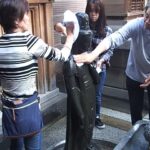 The Healing Temple – Koganji Temple Tokyo
The Healing Temple – Koganji Temple Tokyo
-
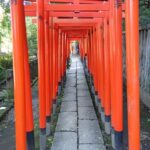 Nezu Shrine Tokyo Japan
Nezu Shrine Tokyo Japan
-
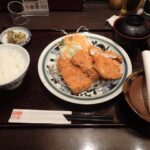 Restaurants close to Hilton Hotel Shinjuku Tokyo
Restaurants close to Hilton Hotel Shinjuku Tokyo
-
 Flight Review Singapore Airlines Tokyo Narita to Singapore Business Class
Flight Review Singapore Airlines Tokyo Narita to Singapore Business Class
-
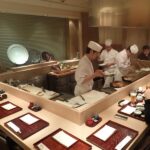 Tempura Kondo Restaurant Ginza Tokyo
Tempura Kondo Restaurant Ginza Tokyo
-
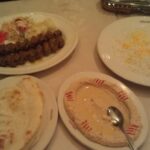 Aladdin Iranian Halal Restaurant Tokyo
Aladdin Iranian Halal Restaurant Tokyo
-
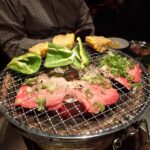 Don Don Yakiniku BBQ Restaurant Kabukicho Shinjuku Tokyo
Don Don Yakiniku BBQ Restaurant Kabukicho Shinjuku Tokyo
-
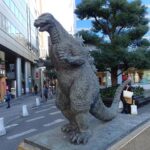 Godzilla Statue in Tokyo
Godzilla Statue in Tokyo
-
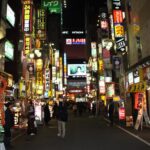 Tourist Highlights of Shinjuku Tokyo
Tourist Highlights of Shinjuku Tokyo
-
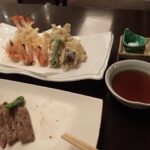 Restaurants close to Hyatt Regency Hotel Shinjuku Tokyo
Restaurants close to Hyatt Regency Hotel Shinjuku Tokyo
